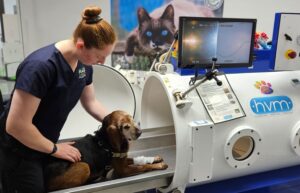Laminectomy and discectomy are spinal surgeries aimed at relieving nerve pressure and alleviating pain. Both procedures address spinal conditions that cause nerve compression, but they differ in their approach and application. Dr. Larry Davidson, a spinal surgery expert, highlights that understanding the unique purposes of laminectomy and discectomy can help patients decide which procedure may be most suitable for their condition.
What is a Laminectomy?
A laminectomy is a procedure where the surgeon removes a part of the vertebra, called the lamina, to relieve pressure on the spinal nerves. By removing the lamina, the surgeon creates more space in the spinal canal, alleviating pressure on the spinal cord and nerves. This procedure is commonly used to treat spinal stenosis, a condition where the spinal canal narrows due to degenerative changes, bone spurs or thickened ligaments.
- Purpose: Laminectomy is typically recommended for patients experiencing pain, numbnessor weakness due to spinal stenosis, which compresses the spinal cord and nerves.
- Targeted Area: This surgery addresses compression caused by structural changes in the vertebrae or surrounding ligaments rather than issues within the disc itself.
- Procedure Type: Depending on the location of the stenosis, it can be performed in various areas of the spine, including the cervical (neck), thoracic (mid-back) and lumbar (lower back) regions.
What is a Discectomy?
A discectomy removes a portion of a herniated or bulging disc that is pressing on nearby nerves. In cases where a disc has ruptured or shifted, it can compress nearby nerves, causing pain, tinglingor weakness. During a discectomy, the surgeon removes the portion of the disc that is causing nerve compression, often using minimally invasive techniques for a smaller incision and quicker recovery.
- Purpose: Discectomy is recommended for patients with herniated discs that are causing pain or neurological symptoms, particularly in the legs or arms.
- Targeted Area: This procedure directly addresses issues within the spinal discs rather than changes in the vertebrae or surrounding ligaments.
- Procedure Type: Discectomy is commonly performed in the lumbar (lower back) region, though it may also be conducted in the cervical area if the disc compression is in the neck.
Key Differences Between Laminectomy and Discectomy
Although both surgeries relieve nerve compression, laminectomy and discectomy address different anatomical structures and conditions. Here’s a closer look at the main differences between the two:
- Focus of Treatment:Laminectomy removes part of the vertebra, while discectomy focuses on disc tissue.
- Typical Conditions Treated:Laminectomy is often for spinal stenosis; discectomy is typically for herniated discs.
- Surgical Approach:Laminectomy may require a larger incision, though both can be minimally invasive.
- Postoperative Recovery:Discectomy generally offers a quicker recovery due to its less invasive nature.
Benefits of Laminectomy
Laminectomy is particularly beneficial for patients with advanced spinal stenosis, as it addresses the structural changes within the spine that lead to nerve compression. Key benefits include:
- Long-Term Pain Relief: Helps alleviate nerve compression, providing lasting relief.
- Increased Mobility:Many patients experience better function and mobility.
- Improved Quality of Life:Pain and symptom relief can lead to a better overall quality of life
Benefits of Discectomy
Discectomy is a less invasive procedure than laminectomy, offering several benefits, especially for patients with herniated discs. These benefits include:
- Immediate Pain Relief:Many feel rapid symptom relief, particularly in the limbs.
- Minimally Invasive Approach:Smaller incisions mean less recovery time and scarring.
- Lower Risk of Complications: Since it targets only part of the disc, discectomy minimizes spinal instability risk.
Despite these advantages, discectomy does carry some risks, including the potential for recurrent herniation in the same disc. Patients should discuss these possibilities with their surgeon to understand the likelihood of long-term success.
Recovery and Postoperative Expectations
Recovery from both laminectomy and discectomy varies depending on the individual’s health, age and the specifics of the surgery. Here’s what patients can generally expect:
Laminectomy Recovery
- Hospital Stay: May require an overnight stay; some patients go home the same day.
- Physical Activity: Light movement is encouraged, but strenuous activities should be avoided for several weeks.
- Physical Therapy: Often recommended to strengthen back muscles and improve flexibility.
- Full Recovery Time: Recovery can take several weeks to months.
Discectomy Recovery
- Outpatient Procedure: Usually allows patients to go home the same day.
- Physical Activity: Light activities can resume within a week; heavy lifting and exercise should wait.
- Physical Therapy: Optional but beneficial for strengthening the spine-supporting muscles.
- Full Recovery Time: Recovery is generally quicker, with most returning to regular activities within weeks.
Choosing Between Laminectomy and Discectomy
Selecting the right procedure depends on the nature of your spinal condition, the severity of your symptoms and your overall health. A comprehensive diagnostic evaluation is crucial for determining which surgery is most appropriate. Here are some factors to consider:
- Type of Condition: Laminectomy is often better for spinal stenosis, while discectomy is suited for herniated discs.
- Severity of Symptoms: Patients with severe symptoms from structural changes may benefit more from a laminectomy; those with localized pain from a herniated disc may prefer a discectomy.
- Conservative Treatment Response: If non-surgical methods haven’t provided relief, surgery may be recommended to alleviate symptoms.
Finding the Best Surgical Option for You
Both laminectomy and discectomy offer effective relief from nerve compression in the spine but serve different purposes based on the patient’s specific condition. Consulting with a knowledgeable spinal surgeon like Dr. Larry Davidson helps to clarify which procedure best aligns with your unique needs and recovery goals. Working closely with your healthcare provider empowers you to make informed decisions for your spinal health and achieve the best possible outcome.



